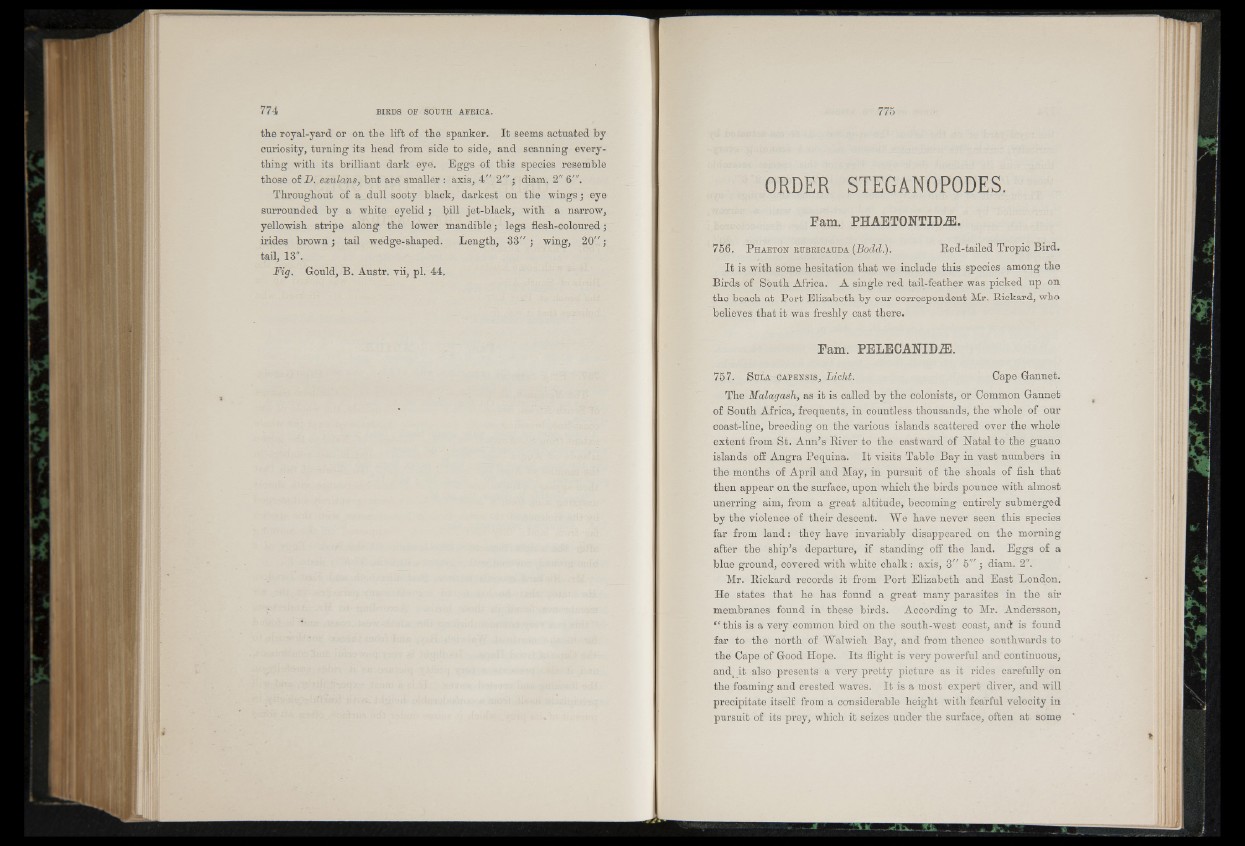
the royal-yard or on the lift of the spanker. It seems actuated by
curiosity, turning its head from side to side, and scanning everything
with its brilliant dark eye. Eggs of this species resemble
those of 2?. exulans, but are smaller : axis, 4" 2"'; diam. 2"
Throughout of a dull sooty black, darkest on the wings; eye
surrounded by a white eyelid ; bill jet-black, with a narrow,
yellowish stripe along the lower mandible; legs flesh-coloured;
irides brown; tail wedge-shaped. Length, 33" ; wing, 20";
tail, 13".
Fig. Gould, B. Austr. vii, pi. 44.
ORDER STEGAN0P0DES.
Fam. PHAETONTIDiE.
756. P haeton eubeicauda (Bodd.). Bed-tailed Tropic Bird.
It is with some hesitation that we include this species among the
Birds of South Africa. A single red tail-feather was picked up on
the beach at Port Elizabeth by our correspondent Mr. Rickard, who
believes that it was freshly cast there.
Fam. PELECANIDiE.
757. S u l a c a p e n s i s , Licht. Cape Gannet.
The Malagash, as it is called by the colonists, or Common Gannet
of South Africa, frequents, in countless thousands, the whole of our
coast-line, breeding on the various islands scattered over the whole
extent from St. Ann’s Biver to the eastward of Natal to the guano
islands off Angra Pequina. It visits Table Bay in vast numbers in
the months of April and May, in pursuit of the shoals of fish that
then appear on the surface, upon which the birds pounce with almost
unerring aim, from a great altitude, becoming entirely submerged
by the violence of their descent. We have never seen this species
far from land: they have invariably disappeared on the morning
after the ship’s departure, if standing off the land. Eggs of a
blue ground, covered with white chalk : axis, 3" 5'" ; diam. 2".
Mr. Rickard records it from Port Elizabeth and East London.
He states that he has found a great many parasites in the air
membranes found in these birds. According to Mr. Andersson,
“ this is a very common bird on the south-west coast, and is found
far to the north of Walwich Bay, and from thence southwards to
the Cape of Good Hope. Its flight is very powerful and continuous,
and< it also presents a very pretty picture as it rides carefully on
the foaming and crested waves. It is a most expert diver, and will
precipitate itself from a considerable height with fearful velocity in
pursuit of its prey, which it seizes under the surface, often at some